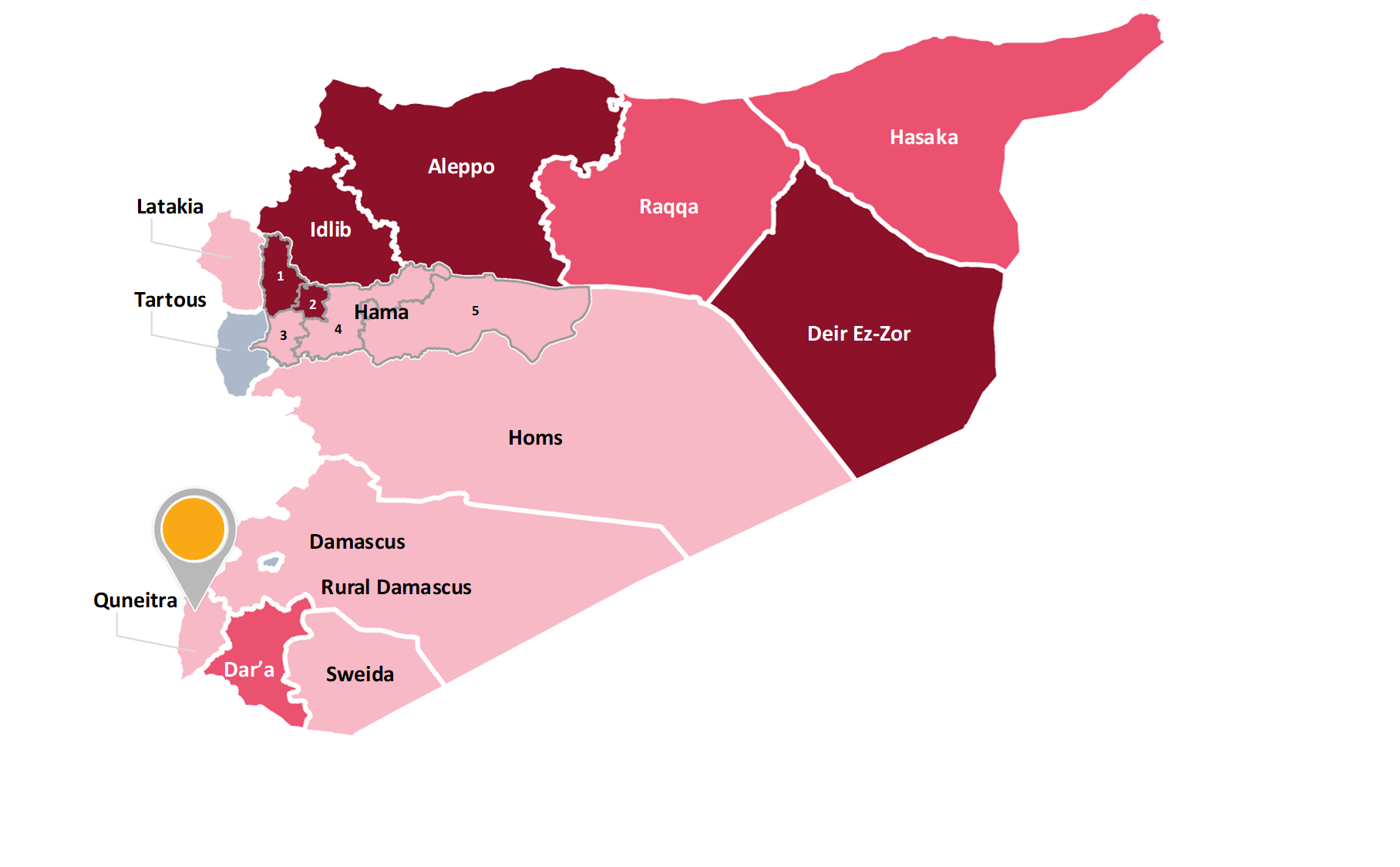[Main COI reference: Security 2020, 2.13]
The governorate of Quneitra is located in southern Syria, bordering the governorates of Dar’a and Rural Damascus, as well as Lebanon, Jordan and the Israeli-controlled Golan Heights. The governorate is divided into two districts: Quneitra and Al-Fiq, and has an estimated population 81 000 as of 2016, according to the Syrian Central Bureau of Statistics. The city of Quneitra remained abandoned after it was destroyed by Israel in 1974.

By mid-August 2018, the GoS had recaptured the parts of the governorate formerly held by rebels and ISIL. The governorate of Quneitra remained under the control of the GoS, however, the security situation is still considered ‘fragile’ and it is reported that the lack of respect for the reconciliation agreements is a significant factor of current fear and tension among the population.
There are reports of growing presence of pro-Iranian forces in Quneitra. Russian military police is also deployed in the governorate. There are reports of ‘sleeper cells of’ anti-government armed groups in the governorate and of sporadic attacks. Airstrikes by the Israeli forces against military and ‘Iranian-backed’ positions in Quneitra have also been reported in 2019 and 2020.
Security incidents reported in 2019-2020 include airstrikes by the Israeli forces, IED explosions, and targeted killings, in particular of former rebel faction members who had joined the GoS forces in a reconciliation process.
ACLED recorded 25 security incidents (average of 0.5 security incident per week) in Quneitra governorate in 2019, the majority of which coded as explosions/remote violence and battles. In the first two months of 2020, the number of security incidents in the governorate was 8, amounting to an average of 1 security incident per week.
In 2019, VDC recorded a total of 3 civilian fatalities and SNHR recorded a total of 5 civilian fatalities in the governorate. Compared to the official figures for the population in the governorate as from 2016, this represents respectively 4 or 6 civilian fatalities per 100 000 inhabitants.
From 2011 to 2018, the governorate of Quneitra experienced the second largest (after Idlib) proportionate influx of people, increasing its population density by 34 %. A sharp decline of IDP movements was documented in 2019, when only 39 IDP movements were recorded. With regards to returnees, 9 000 return movements were recorded in 2019, mainly from within the governorate and from Rural Damascus.
High levels of destruction of State and civilian infrastructure is reported in the governorate, leading to a lack of critical services, such as sanitation, healthcare, and drinking water. Several districts have no shops or bakeries and in some there are no functioning schools. A dire humanitarian situation and food insecurity were reported in Quneitra as of 2019 [see also IDPs and returnees, 2.3; Damascus, 3.2]. There are also reports of unexploded remnants of war found within the governorate.
|
|
Looking at the indicators, it can be concluded that indiscriminate violence is taking place in the governorate of Quneitra, however not at a high level and, accordingly, a higher level of individual elements is required in order to show substantial grounds for believing that a civilian, returned to the territory, would face a real risk of serious harm within the meaning of Article 15(c) QD.
|
